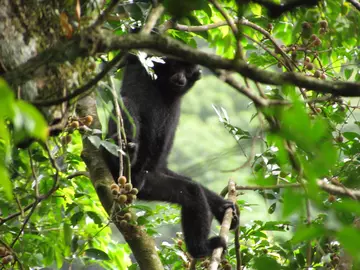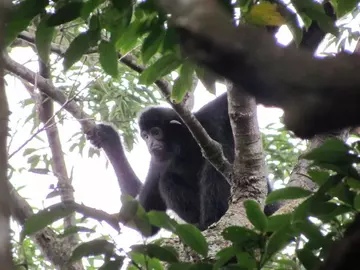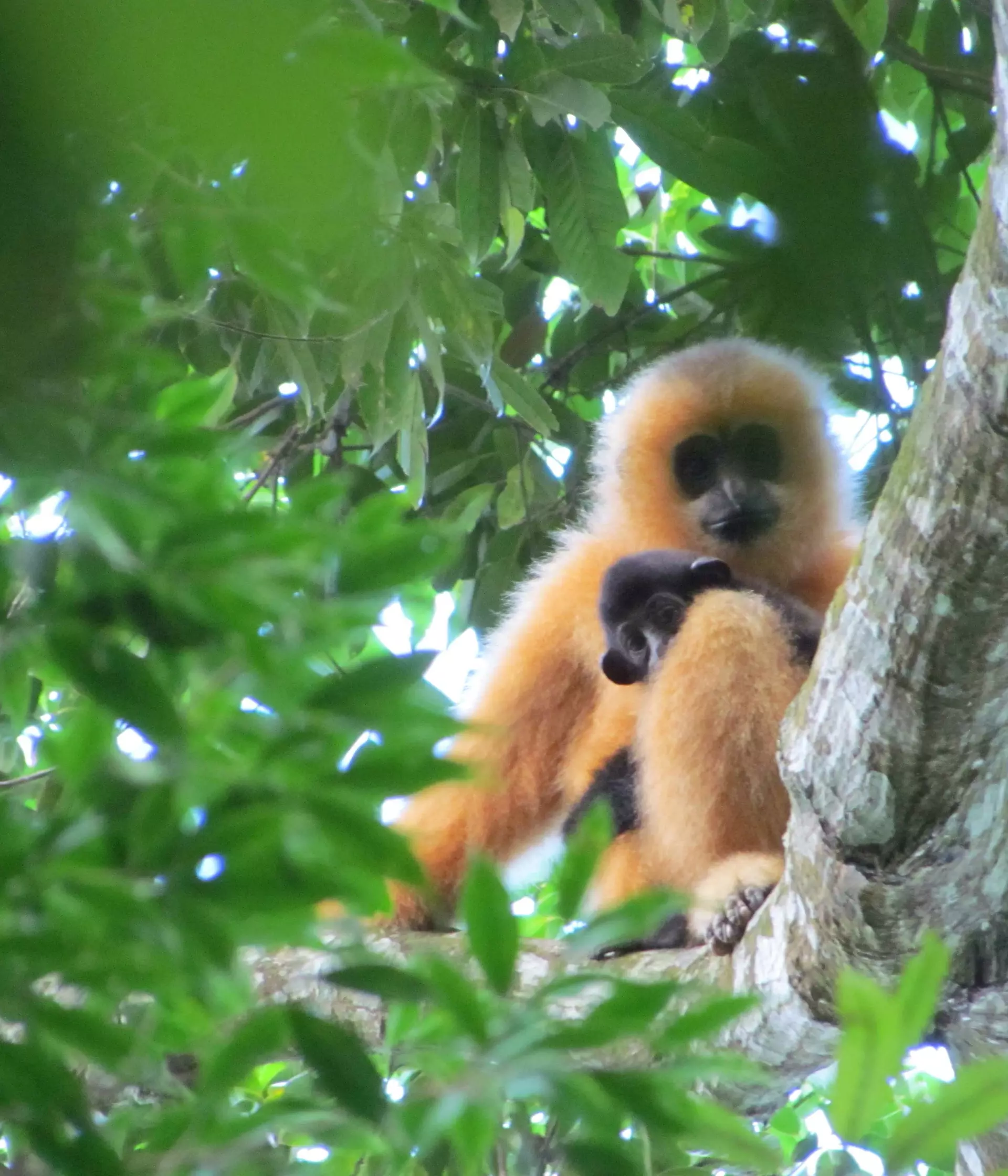
There are just 37 Hainan gibbons estimated to remain on Earth.
We caught up Dr Heidi Ma, Postdoctoral Research Assistant at ZSL’s Institute of Zoology, to find out how ZSL is helping to secure a future for this Critically Endangered primate...
What makes Hainan gibbons special?
Hainan gibbons are the rarest primates and one of the rarest mammals on Earth. They are strictly arboreal, living their entire lives in the forest canopy.
They form family groups of one adult male, two adult females, and their offspring, and have strong bonds which they declare by singing duets in the morning. Their song is loud and can travel up to 2 kilometres, we record these songs, calls and other sounds from the forest with acoustic recorders for analysis with machine learning algorithms.

Why do they need our help?
Hainan gibbons were once widespread across Hainan Island, China, with a population of about 2,000 in the 1950s, which declined catastrophically in the late twentieth century. They have since persisted in a single patch of forest inside Hainan Tropical Rainforest National Park, that is only 15 square kilometres, with a population of only about 35 individuals surviving.
What has caused such a dramatic decline?
The main threats that drove them to near extinction were direct hunting and habitat loss. In the last two decades, their population has slowly recovered, but growth is limited by the amount of available good quality, primary forest habitat.
How is ZSL helping to secure a future for the Hainan gibbon?
As part of our Hainan Gibbon Project, we work with Chinese collaborators to help ensure the continued effective protection of gibbon habitat and enhanced forest connectivity.
We advise on the optimal monitoring methods to understand gibbon social group formation, habitat requirements and dispersal and understand the wider status and threats to endemic biodiversity on Hainan Island.

How are we working with local people to support the Hainan gibbon?
We work closely with Chinese collaborators and communities local to Hainan gibbon habitat and conduct research by interviewing people living in rural villages surrounding the protected area where gibbons are found.
We contribute to local capacity building for Hainan gibbon conservation, by working with researchers, students, non-profits, local communities, and governing authorities.

Finally, what are your hopes for Hainan gibbons in the future?
My hope is for the Hainan gibbon population to keep increasing and become more resilient to possible natural or human-cause disasters, and for the species to become a flagship and umbrella species for Hainan's tropical rainforests, which contain other poorly known but highly threated species such as the Hainan peacock pheasant and freshwater turtles.
I also envision a future in which gibbons, other wildlife, and the forest ecosystem are known to and experienced by more people, and that local culture is equally valued and protected as part of conservation management of the entire landscape.
Find out more about ZSL's Hainan gibbon conservation work

